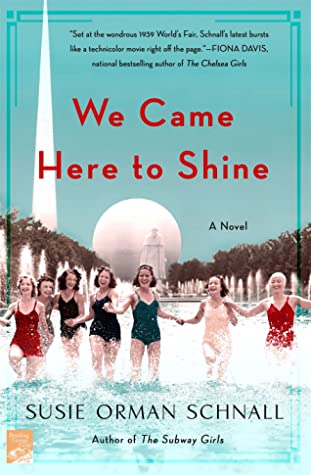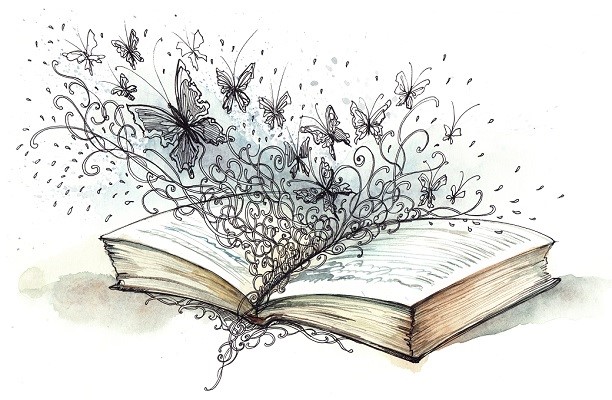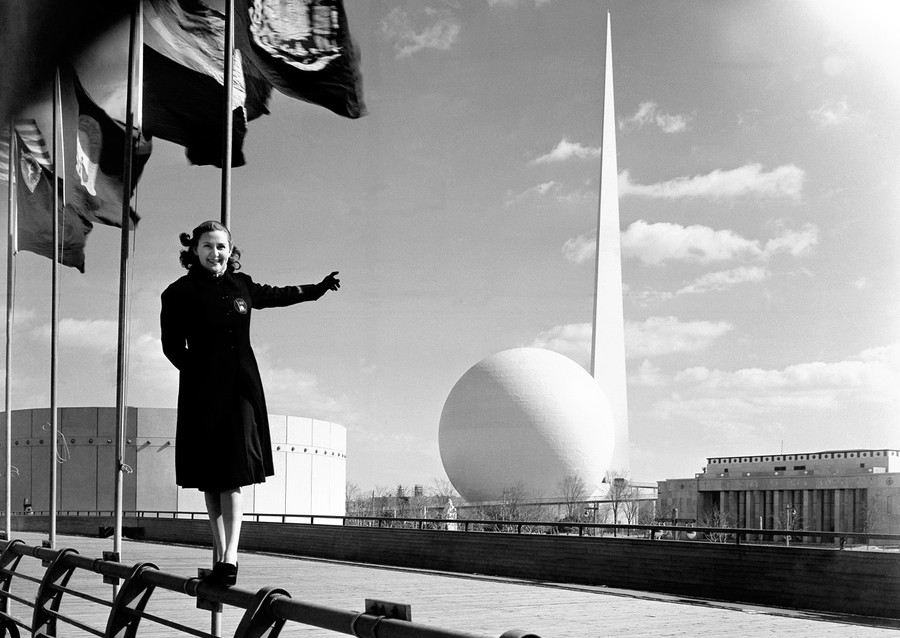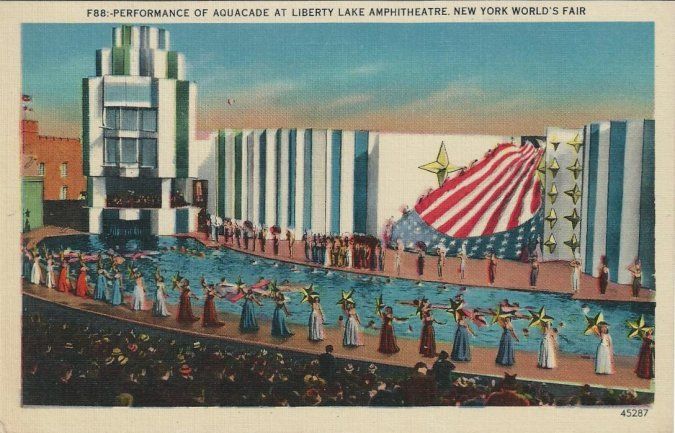
Title: We Came Here To Shine
Author: Susie Orman Schnal
Publisher: St. Martin’s Griffin
Publication date: June 16, 2020
Length: 384 pages
Genre: Historical fiction
Source: Purchased
Rating:
At the iconic 1939 New York World’s Fair, two ambitious young women—a down-on-her-luck actress and an aspiring journalist—form an unlikely friendship as they navigate a world of possibility and find out what they are truly made of during a glorious summer of spectacle and potential…
Gorgeous Vivi is about to begin filming her first starring role in a Hollywood picture when the studio head ships her off to New York as a favor to a friend. She’s assigned the leading role in the heralded Aquacade synchronized swimming spectacular at the World’s Fair, a fate she believes will destroy her film career. If she performs well, she’ll have another chance at stardom, but with everything working against her, will her summer lead to opportunity or failure?
Plucky Max dreams of becoming a serious journalist, but when her job at the New York Times doesn’t pan out, she finds herself begrudgingly working for the daily paper of the World’s Fair. As her ideas are continually overlooked by her male counterparts and her career prospects are put in jeopardy, Max must risk everything to change the course of her life.
When Max and Vivi’s worlds collide, they forge an enduring friendship. One that teaches them to go after what matters most during the most meaningful summer of their lives.
We Came Here To Shine takes place at the 1939 New York World’s Fair, bringing the spectacle to life through the experiences of Max and Vivi, two very different women who find themselves drawn together as they each battle sexism and misogyny.
Max is a journalism student at NYU, whose dream is to become a star reporter for the New York Times. As part of the coursework, each member of the class is assigned to a summer internship with a New York publication. Max is crushed when she loses out on her first choice with the Times, and is instead assigned to Today At The Fair, the daily paper produced at the World’s Fair to highlight the days’ events and generate buzz and excitement.
It gets even worse when she and her classmate Charlie show up to work on the first day, only to be told that Charlie will write all the articles, and Max will be responsible for the daily event listings. When she protests, she’s told that women aren’t suited for reporting, and are much better at doing detail work like lists and calendars. Max is furious, especially because she and her classmates are competing for a scholarship that will be awarded based on submission of articles written during the internship. Without the scholarship, Max doesn’t see a way that she can afford the next year’s tuition.
Meanwhile, Vivi is on track as a rising starlet in the Hollywood studio system. After supporting roles in a few films, Vivi is about to start filming a starring role in a new movie — until the studio chief informs her that she’s being replaced, and is instead being loaned out to Billy Rose, the producer of the Aquacade swimming show at the World’s Fair. The Aquacade’s star (in the role of Aquabelle Number One) has been injured, and they need someone to replace her and draw in the crowds. Vivi isn’t a movie star yet, but the producers all agree that the Hollywood cachet will boost ticket sales.
Vivi is dismayed and hurt, but has no choice. She’s under contract to the studio, which means they can do as they want with her. They also dangle a promise that after the summer, they have another starring role all lined up for. Do what they want, and she’ll get that chance. Don’t do it, and the studio will be done with her, ending her Hollywood dreams for good.
There’s a lot to like about We Came Here To Shine, but it fell flat for me in several ways.
First, what I liked:
- Being introduced to the wonders of the Fair, which at that time would have been mind-boggling. New technologies, glorious buildings and gardens, international pavillions, glamorous restaurants, and the Aquacade — the book does a great job of conveying the awe of experiencing the Fair for the first time.
- I liked Max and Vivi’s friendship and how they supported one another through their lowpoints, helping each other figure out how to get out of terrible situations and take control of their own paths.
- The sense of the impact of the Depression, as shown by Max’s family life as well as by some of the negative reactions to the Fair around the ticket prices making it beyond the reach of many families.
- The photos and historical notes included in the book, which really helped me appreciate different attractions mentioned in the story, as well as explaining which of the issues and people are real and which are created by the author.
- The inclusion of the National Women’s Party (a real organization) as an inspiration for both Max and Vivi.
The bits that didn’t really work for me:
- For someone who’s described as being top of her class in journalism, the tastes we get of Max’s writing just aren’t impressive. In fact, the pieces she submits for the scholarship competition are sensational without including sources or diving beyond the surface.
- It doesn’t actually make sense that Vivi would be chosen to take on the high-profile starring role in the Aquacade. She was on her high school swim team, but has never done choreography or synchronized swimming, and is initially given just four days to rehearse before her first performance.
- Vivi’s family drama, which drove her to Hollywood in the first place, isn’t explained well enough. We know the basics of what happened, but (see below), the presentation left me feeling that I was reading about stock characters, rather than unique people and dynamics.
- SPOILER: Vivi, with Max’s help, finds a way to get out of her contract and leave the Aquacade and Hollywood in her past. It’s clear that she’s been mistreated, cheated, and controlled by the various powerful men who run the industry and have absolute power over her career, but I couldn’t quite accept that Vivi’s need to take back her life would include giving up her career and switching aspirations quite so suddenly. It reads as if she never really wanted to become an actress in the first place, but that’s not the impression I had at the start of the book.
The biggest issue I had with the book is the writing. The writing style makes the story feel bland, even when there’s something dramatic happening. In fact, this is probably what bothered me the most: Even as certain events unfolded, I felt like I was being told about what happened, rather than actually seeing them happen. Again and again, I felt like I was reading a summary of the big moments — some key parts felt too short or glossed over, and I never got the sense that I was there.
Still, I did enjoy enough aspects of We Came Here To Shine to make me glad I read it. I’ve now spend some time browsing images and videos to get a sense of what being at the Fair was like. To learn more about the Fair, check out https://www.1939nyworldsfair.com/index.htm. Also, here’s a short video highlighting the Aquacade (silent, but still fun to watch.)
We Came Here To Shine is my book group’s pick for January — yet another book that I likely would not have come across otherwise. Despite the problems mentioned above, it’s worth reading to experience the time and place of such a unique and exciting event.



